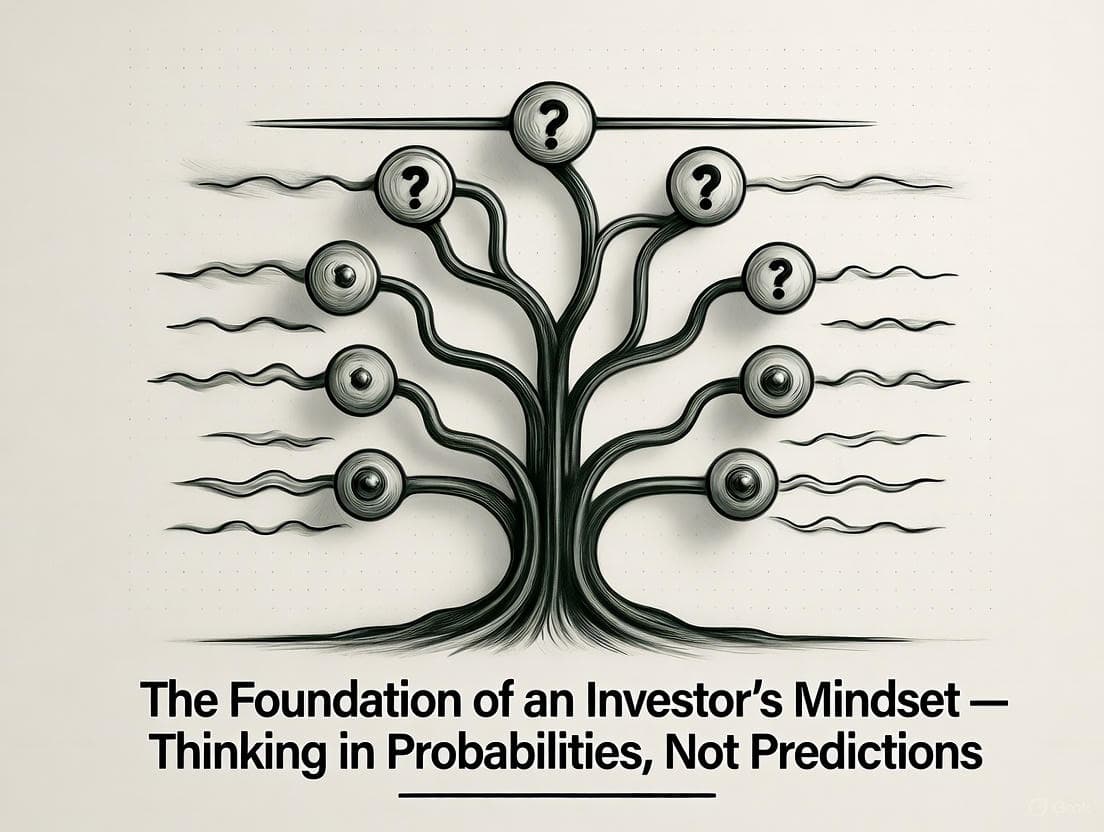The Foundation of an Investor’s Mindset — Thinking in Probabilities, Not Predictions
Published on November 2, 2025

TL;DR
Investors often fail due to overconfidence and single-outcome thinking, rather than poor information. Successful investors treat markets as probability engines, focusing on weighted expectations (Expected Value) and aiming to be 'right big' when they are right, rather than being right all the time. The key is a cognitive shift from predicting the future to preparing for various scenarios, converting uncertainty into strategic advantage. The market rewards consistent rationality and treating uncertainty as a constant input, not an anomaly.
1. The Problem: Overconfidence in Certainty
Most investors lose not because of poor information but because of poor interpretation.
The obsession with “what will happen” blinds investors to the more productive question — what could happen and how likely is it?
Markets are probability engines, not prophecy platforms. Those who survive and scale are the ones who detach emotionally from single-outcome thinking. Every forecast, no matter how data-backed, carries uncertainty. Successful investors internalise this.
2. Thinking in Probabilities
The best investors — from Buffett to Druckenmiller — treat outcomes as weighted expectations:
Expected Value=(Probability of Gain × Magnitude of Gain)−(Probability of Loss × Magnitude of Loss)
They don’t aim to be right all the time; they aim to be right big when they are. For example:
- A trade with 40% win probability but 3:1 reward-to-risk can outperform a 70% win strategy with tight margins.
- A portfolio with controlled downside volatility compounds faster than one chasing momentum peaks.
The difference is mindset, not math.
3. Cognitive Shift — From Prediction to Preparation
Instead of forecasting the next move, prepare for scenarios:
- If inflation surprises upward, which assets gain relative strength?
- If liquidity tightens, which sectors are vulnerable?
- If volatility spikes, how does your risk-adjusted return change?
Preparation outperforms prediction because it converts uncertainty into strategic advantage.
4. Key Takeaway
The market rewards investors who treat uncertainty as a constant input, not an anomaly.
Every decision becomes a probability-weighted hypothesis — unemotional, structured, and repeatable.
Mindset Rule: Stop trying to be certain. Start trying to be consistently rational.